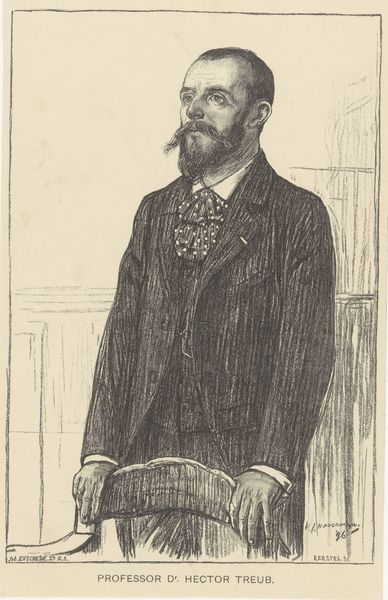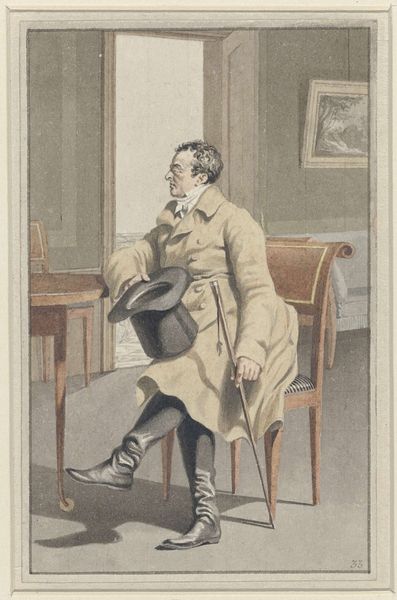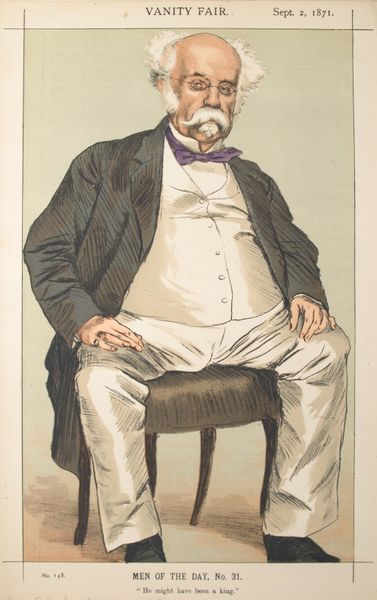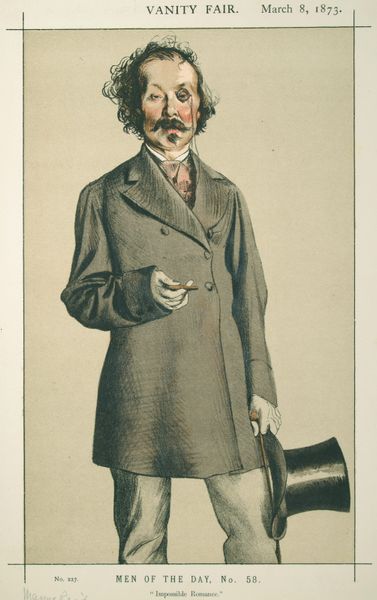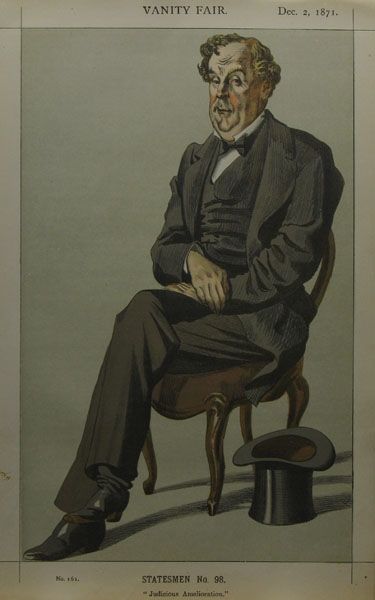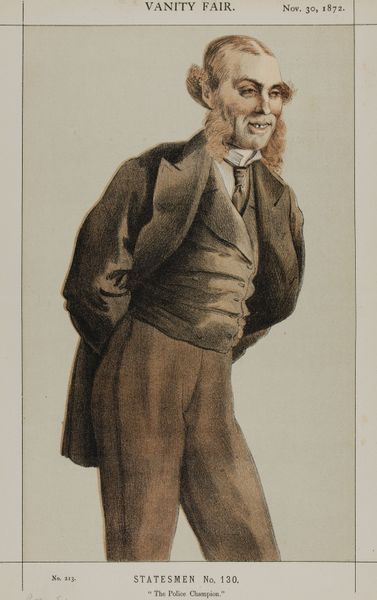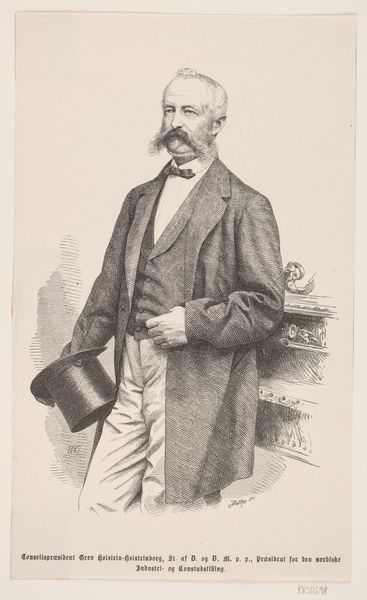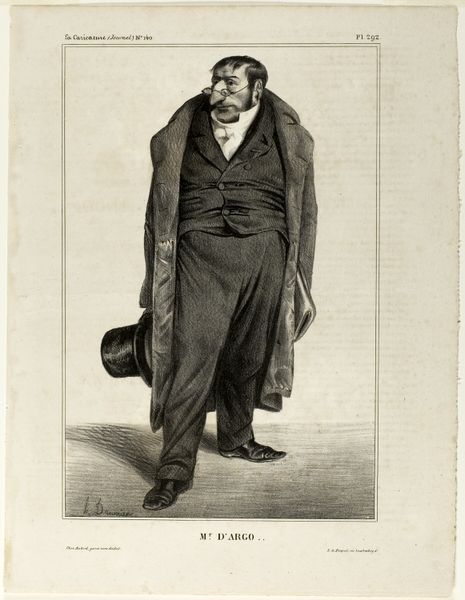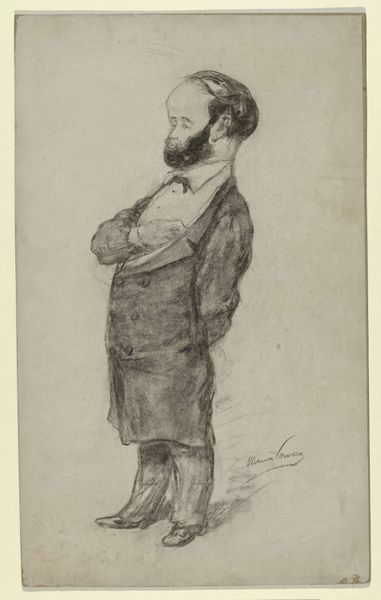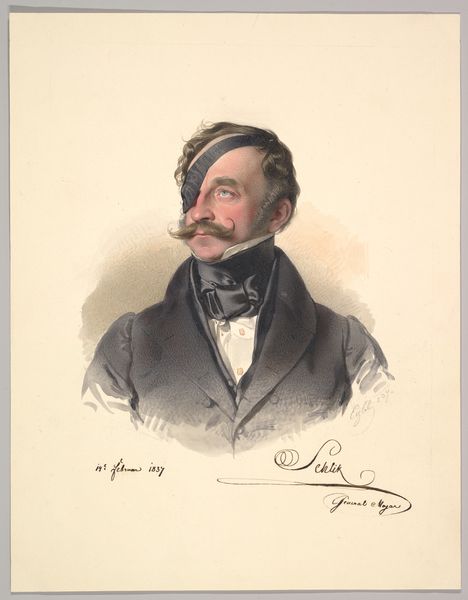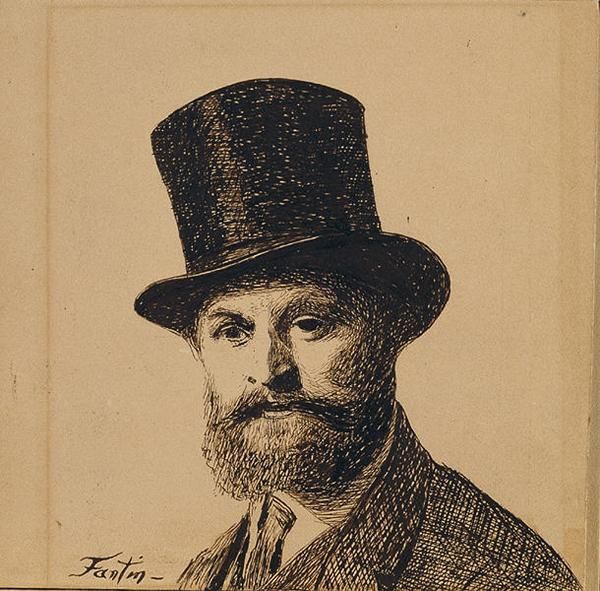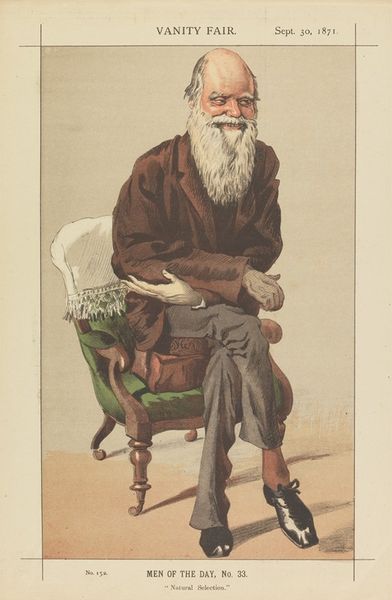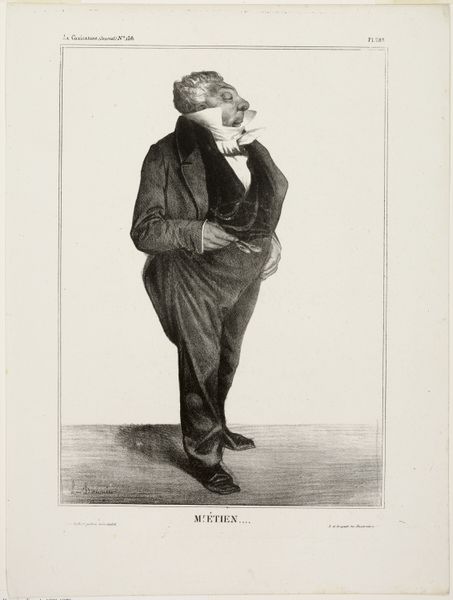
Copyright: Public domain
Curator: This 1871 pen drawing is entitled "Man of the Day, No. 32," a caricature of George Whyte Melville by James Tissot. It’s an image steeped in Victorian sensibilities. Editor: Immediately, I'm struck by the almost comical stiffness of the subject. The rigid pose, the perfectly coiffed facial hair, the top hat indoors – it speaks volumes about Victorian society’s emphasis on formality and outward presentation. Curator: Indeed. Tissot captures that performance aspect of social life perfectly. Note how Melville, reclining casually, still maintains a posture of studied leisure. His accessories – the cane, the patterned suit – become signifiers of his status and role within that society. What do you make of his prominent mustache and side whiskers? Editor: It seems almost a mask, doesn't it? Victorian men often cultivated elaborate facial hair, signaling virility and perhaps even a sense of control amidst rapid social changes. The exaggerated style Tissot presents here walks the line between respect and wry observation, revealing perhaps that Victorian obsession with masculinity. Curator: Tissot’s decision to portray him as a “Man of the Day” specifically as the "novelist of Society" points to a fascination with social roles. Writers held a crucial position, not just as observers, but also as shapers of social norms and moral values. Editor: Absolutely, it showcases the media's power to influence public perception. I am certain it appeared in some periodical, where caricatures like these acted as both entertainment and subtle critiques of public figures. It certainly served as a social commentary, capturing the essence of Victorian identity and the emerging culture of celebrity. Curator: Very true. We should add that Melville was known for his novels about fox hunting. With this knowledge, doesn’t the umbrella held like a riding crop create additional symbolic layers of British gentry life and identity? Editor: Indeed. Perhaps what Tissot captures so deftly is not just the man himself, but also the very notion of a carefully constructed public persona. I think the real triumph is to subtly undermine the staid image Melville undoubtedly fostered, capturing more in a single panel than we would otherwise glean from the era. Curator: It’s a reminder of art's role as social commentary, how it can reflect, critique, and ultimately shape our understanding of history. Thank you. Editor: A telling study, indeed. Thanks for unveiling its intricate layers for me!
Comments
No comments
Be the first to comment and join the conversation on the ultimate creative platform.
